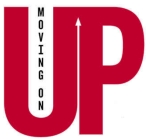By Gino Blefari, President & CEO, Intero Real Estate Services, Inc.
 Here’s a term we haven’t heard much of in the last few years: move-up buyer. But many markets are now seeing many more of these folks. Some are even showing signs of strength in luxury or the high-end of the market thanks to this type of buyer.
Here’s a term we haven’t heard much of in the last few years: move-up buyer. But many markets are now seeing many more of these folks. Some are even showing signs of strength in luxury or the high-end of the market thanks to this type of buyer.
After the recession started to take hold in 2008, the market for large and expensive homes fell as more buyers looked for more affordable places to live that weren’t as much of a drain to heat, cool and keep lit up.
That appears to be changing as revealed in a recent New York Times article. In July 2013, sales of homes costing more than $1 million increased 46.6% from the previous July. And sales of bigger homes are also reaching new highs.
Larger homes were popular before the recession, but the median size of new homes peaked at 2,295 square feet in 2007. The median size of new homes then fell to 2,159 square feet in 2009. But, according to new data from the National Association of Home Builders, the size of new homes hit a new high of 2,384 square feet in 2012. The NAHB also says that about 41% of news being built in that time had four or more bedrooms, up from 34% in 2009.
What does this mean for buyers and sellers and the housing market in general?
It’s a sign of strength for sure. Having more move-up buyers creates more inventory with the homes they sell in order to move up.
It’s also a sign of a stronger economy – at least in segments. Move-up buyers need strong incomes and secure jobs to make these moves. And while we’re in no way soaring in all segments, this ultimately is a good thing for our housing markets.
The move-up buyer also signals strength in consumer confidence in housing. This was a hot topic during the downturn as many commentators liked to assume that those families displaced by lost incomes and foreclosures would impact everyone’s appetite for owning a home.
But that appears not to be the case. In fact, bigger, more expensive homes appear to be first on the list of financial commitments when things start to look up for individual families. That’s good news for home buyers and owners of all types.

No comments:
Post a Comment